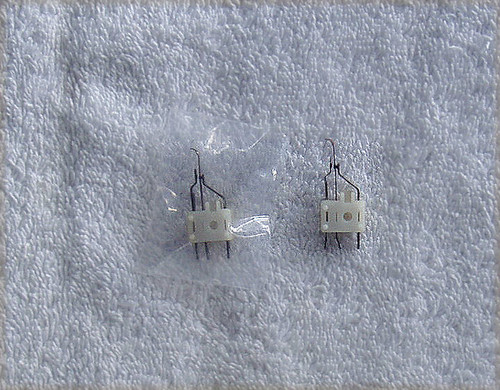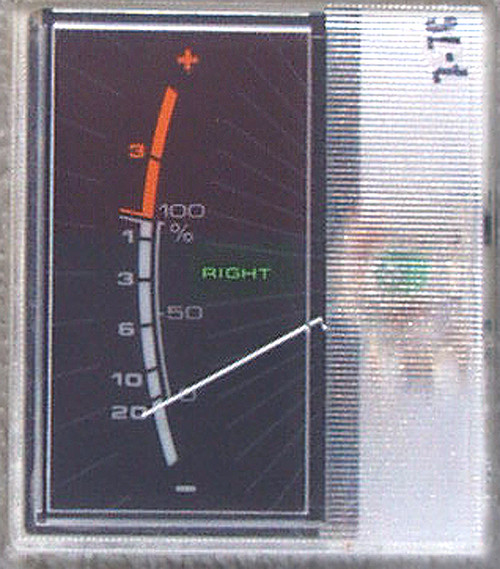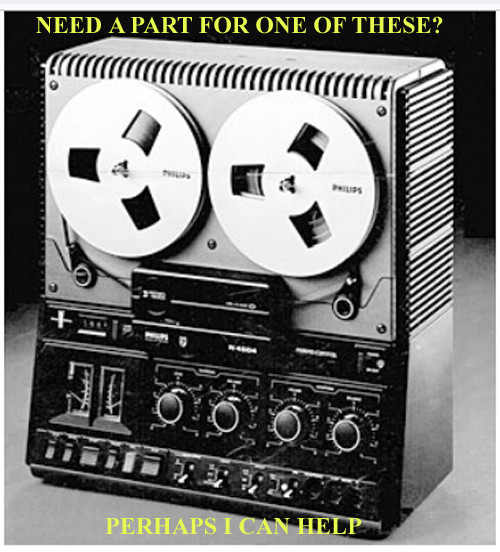HISTORY:
Working through yet more reel to reel related accessories and media plus some PHILIPS reel to reel tape machines, models N4504 & N4512
Mounted right on the inside rear of the cabinet is this nice C core AC transformer. Although largely superseded by ferrite based toroid transformers, the C core has the advantage of less stray magnetic flux and greater magnetic efficiency - and they look great!
The N4504/4512 are not a bad machine from Philips, 3 motors, separate Read and Write heads in addition to the Erase head, 3 run speeds but not all that impressed with the extensive use of plastic for the case, albeit high impact very strong plastic! This makes for a pretty lightweight machine compared to the Otari 5050's and Studer B67's I have lugged around in the past!
There was actually very little "wrong" with the machines I am "parting out" but I felt they were more useful as "organ donors" to bring other machines back to life (or improve their functioning) so they are currently being "operated on" to extract useful components.
I am very much "into" sustainability and a complete tape machine represents a LOT of embedded energy and to waste that embedded energy is a very bad thing, even worse is to bury it in landfill and subsequently poison our environment!
What is embedded energy?
Embedded energy is a measurement of the total energy that was used to create a component, a module or a complete piece of equipment originally.
HERE is some more information about Ee
PHILIPS - Reel To Reel Tape Recorder SPARE PART
Model: N4504 & N4512
Part # 33851 3 WA770 & 33851 WA864 (T1 on the schematic)
Switchable AC input 110, 127, 220 & 240V AC (currently set to 240V)
Single secondary winding: 19V (open circuit i.e without load)
NOTE: The schematic indicates the secondary is centre tapped but not used. Physically I cannot see any other secondary "tags" so I am considering this as a single winding WITHOUT access to a centre tap.
AC transformer with associated parts (input voltage rotary switch, fuse holder with fuse and 100R 4W wirewound resistor)
Transformer has mounting "slots" for securing to a chassis
TRANSFORMER DIMENSIONS:
Body: 78mm x 78mm x 52mm
WEIGHT: 800g
NOTES:
Of course this transformer can be used with a myriad of electronic "projects" not just the Philips R2R machines, but only up to approximately 20VA (judging from the size of the transformer)
If it was desired to use on a fixed AC input voltage then the switch can be "cut away" and discarded and the auxiliary fuse holder/resistor would not be required either. If you are curious, the resistor is R820 in the schematic and it's only purpose in life is to limit the current/voltage to two incandescent lamps.
Also note that the fuse holder/fuse are on the SECONDARY side of the transformer, the primary is NOT fused.
See the photograph depicting the Service Manual extract of T1 and surrounding components ... the pink dot indicates the above points I have made.
There are NO indications on the transformer as to the winding purposes so you need to know what you are doing, particularly when sorting out those multiple primary windings.
If the transformer is being used as a replacement in a N4504/N4512, I have not cut the existing wiring "short" - all remaining leads have plenty of length. Interesting that Philips used solid core wires, these are not stranded.
The part number differs very slightly (the suffix) between the two transformers but the physical appearance, wiring etc is identical. The voltage readings are also absolutely identical. I believe the difference in numbering is due to a batch number code on the label.
COSMETIC CONDITION:
USED
CLEAN
NO broken parts
TESTING:
I did check the secondary voltage but only under "no load" conditions, I had already substantially dismantled the machine. Actual reading was 19.3V AC on either transformer.
I have now packed this AC transformer onto a stiff cardboard base and then sealed within strong clear plastic to protect it from the environment while it waits for a "new purpose in life"















